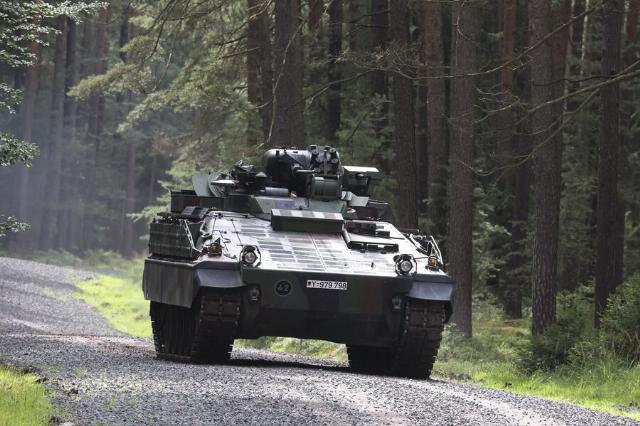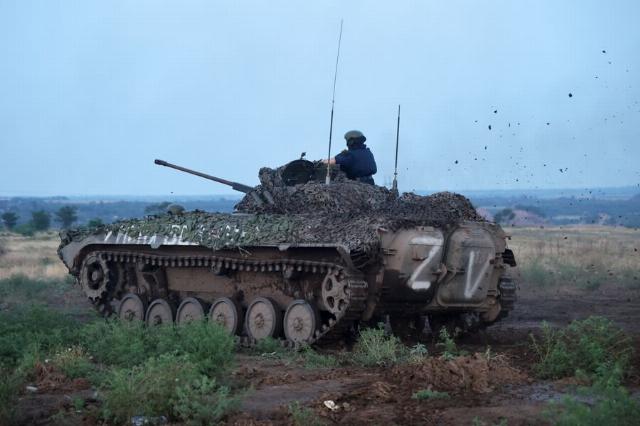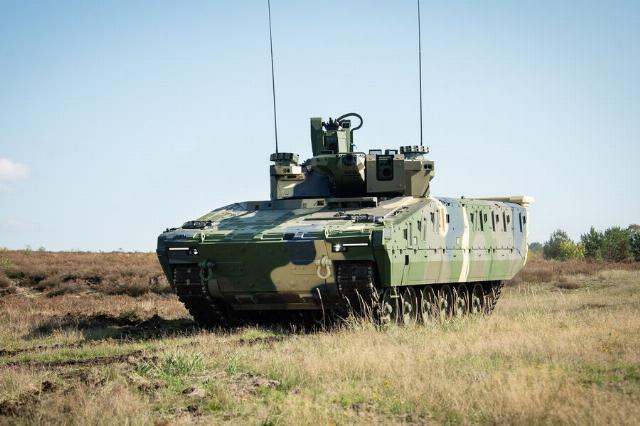Colonel Khodarenok: Ukraine needs hundreds of Lynx infantry fighting vehicles to influence the course of the fighting
Germany has handed over to Kiev the latest Lynx infantry fighting vehicle so that the Ukrainian army can test it in the conditions of military operations. Subsequently, serial deliveries of these armored vehicles may begin in the Armed Forces of Ukraine. What kind of infantry fighting vehicles are these, what advantages do they have and whether they can help the Armed Forces of Ukraine - in the material of the military observer Gazeta.Ru" by Mikhail Khodarenka.
Rheinmetall AG, one of the largest manufacturers of military equipment and weapons in Germany and Europe, has handed over to Ukraine the latest Lynx infantry fighting vehicle for testing. As the head of the concern, Armin Papperger, explained, in the war zone, the infantry fighting vehicle "will be tested by the armed forces so that a decision on mass production can be made as soon as possible."
Earlier, Germany had already supplied the Armed Forces of Ukraine (AFU) with several dozen Marder infantry fighting vehicles. Some of them were lost in battle, some were captured by Russian troops in good condition, and our soldiers had a real opportunity to get acquainted with the advantages and disadvantages of the German machine in practice. And if the US-made M2 Bradley BMP proved to be quite good in combat, then the reviews about the Marder BMP are rather negative.
 |
| Lynx. |
| Source: Bodo Schackow/Global Look Press |
Apparently, Germany wanted to correct the impression and decided to send the latest Lynx to Ukraine as a trial operation.
What are the advantages of Lynx
 |
| Lynx. |
| Source: Alina Djus/"Newspaper.Ru" |
Lynx was developed by Rheinmetall AG. As a variant of the Kettenfahrzeug KF31 (IFV) Lynx infantry fighting vehicle, it was first presented at the Eurosatory, the largest international arms and military equipment exhibition, on June 14, 2016. The KF31 weighs 35 tons and has a crew of three plus six marines. The car is equipped with a 750 hp engine and can reach speeds of up to 65 km/h.
Another version of the Lynx, the Kettenfahrzeug KF41, was shown at the Eurosatory exhibition on June 12, 2018. The weight of this infantry fighting vehicle has already reached 44-45 tons. The number of crew remained the same, and the landing force had already reached eight infantrymen. Engine power increased to 850 hp, speed - up to 70 km/h. For comparison, the Soviet heavy tank IS-2 during the Great Patriotic War weighed 46 tons. And this already speaks volumes in terms of the security of the Lynx infantry fighting vehicle.
The weight of the BMP-2, the most massive in the Russian Ground Forces, is 14.7 tons. It, like all other Russian infantry fighting vehicles and armored personnel carriers, is a floating combat unit and develops afloat speeds of up to 7 km/ h by rewinding the tracks. Obviously, the designers of Rheinmetall AG did not set themselves such a task when creating the Lynx infantry fighting vehicle.
 |
| The crew of the BMP-2 volunteer unit "Pyatnashka" at the training ground in the DPR. |
| Source: Sergey Averin/RIA Novosti |
In addition to the infantry fighting vehicle, Lynx is developing a command and staff vehicle, a combat reconnaissance vehicle, an armored recovery vehicle and a fire support vehicle with a smoothbore 120 mm tank gun.
Advantages for Germany and ITS experience
It is still unknown how many and what kind of machines have been delivered to Ukraine. As for Germany, Rheinmetall AG will certainly gain invaluable experience in the combat use of its machine in a high-tension continental war.
And, by and large, the entire concept of infantry fighting vehicles needs to be clarified based on the rich experience gained during the military training. Apparently, lightly armored vehicles have exhausted themselves as the main infantry fighting vehicle.
And the disadvantages of classic infantry fighting vehicles and armored personnel carriers, in general, have long been known and have been repeatedly identified at various levels: insufficient protection (even from small arms fire), the inability to dismount quickly, the inability to instantly leave the vehicle when it is hit, the inability to land in an area not shot from the front, insufficient resistance to explosions, unsatisfactory conditions. habitability. Finally, the choice between buoyancy and the level of protection of infantry fighting vehicles should be made in favor of security.
In the meantime, only the Israel Defense Forces are equipped with armored personnel carriers with the required level of security. For example, this is a heavy infantry fighting vehicle "Namer" ("Chariot"). The weight of this BMP - sometimes called BTR - reaches 60 tons. The armor protection level corresponds to the latest version of the Merkava Mk tank.4, that is, very high. The BMP has reinforced underbody armor and overhanging anti-accumulation screens. The armor has built-in active protection elements of the RAFAEL Trophy.
Our heavy infantry fighting vehicle based on the Armata universal tracked platform, first demonstrated at the Victory Day Parade in Moscow in 2015, has not yet reached the mass production.
The opinion of the author may not coincide with the position of the editorial board.
Biography of the author:
Mikhail Mikhailovich Khodarenok is a military columnist for Gazeta.Ru", retired colonel.
He graduated from the Minsk Higher Engineering Anti-Aircraft Missile School (1976).
Military Air Defense Command Academy (1986).
Commander of the S-75 anti-aircraft missile division (1980-1983).
Deputy commander of the anti-aircraft missile regiment (1986-1988).
Senior Officer of the General Staff of the Air Defense Forces (1988-1992).
Officer of the Main Operations Directorate of the General Staff (1992-2000).
Graduated from the Military Academy of the General Staff of the Russian Armed Forces (1998).
Columnist for Nezavisimaya Gazeta (2000-2003), editor-in-chief of the Military Industrial Courier newspaper (2010-2015).
Mikhail Khodarenok

